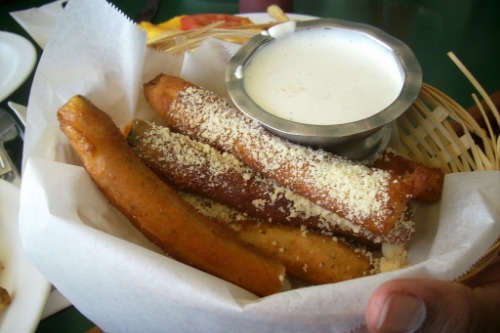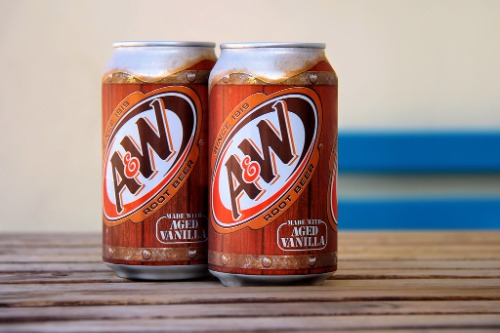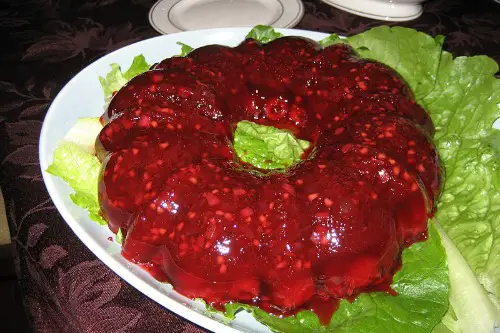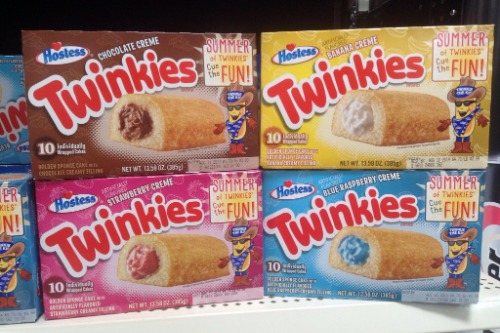1. Spray Cheese

For many outside the United States, the concept of spray cheese from a can borders on the bizarre. This product, which comes in a pressurized container and is sprayed directly onto crackers, sandwiches, or even vegetables, has an unnatural bright orange color that seems out of place in the world of dairy products. It’s considered by some to be a synthetic approximation of cheese, made with chemicals and preservatives to ensure its long shelf life. The texture, smooth and airy, is different from traditional cheese, leading to mixed reactions from international visitors.
Despite its unusual origins, spray cheese holds a special place in American snack culture. Americans often enjoy the convenience of a can that can be easily stored and used for quick meals or snacks. The rich, tangy flavor of the processed cheese is a comfort food for many, especially during sporting events or casual get-togethers. However, visitors from other countries might find the whole idea of spraying cheese from a can to be both unsettling and perplexing, as it lacks the traditional characteristics that make cheese a beloved food worldwide.
2. Sweet Potato Casserole with Marshmallows

Sweet potato casserole topped with marshmallows is a holiday staple in the United States, particularly during Thanksgiving. The dish combines roasted sweet potatoes, butter, brown sugar, and a fluffy layer of marshmallows that are toasted to a golden brown. For Americans, the blend of sweet and savory flavors in this casserole is a comforting, nostalgic tradition. It’s served as a side dish alongside turkey and stuffing, or sometimes even as a dessert.
Outside the U.S., however, this unique casserole often leaves people scratching their heads. The idea of marshmallows on top of sweet potatoes—traditionally a savory food—strikes many as odd. In countries where sweet potatoes are typically cooked in savory dishes or as standalone side dishes, the combination of sugar, butter, and marshmallow seems more like a dessert gone wrong. For some, it’s an acquired taste, while for others, it’s just too much sweetness to handle in one dish.
3. Fluffernutter Sandwiches

Fluffernutter sandwiches are a beloved treat in many American households, particularly in New England. The sandwich consists of peanut butter and marshmallow fluff spread between slices of soft white bread. It’s an easy-to-make snack or lunch, packed with sweetness from the fluff and richness from the peanut butter. To Americans, this childhood favorite brings back fond memories of school lunches or after-school snacks.
However, for many people around the world, the idea of combining peanut butter and marshmallow fluff seems like an overly sugary and strange concept. While peanut butter is familiar in many cultures, marshmallow fluff is not, and its intense sweetness can be overwhelming. People from countries where sandwiches are typically savory might find this pairing strange and difficult to accept. The texture of the fluff, which is sticky and gooey, also adds to the unfamiliarity of the dish for international palates.
4. Corn Dogs

Corn dogs are a popular fairground food in the United States, often enjoyed at outdoor events or amusement parks. A corn dog is essentially a hot dog that’s coated in a thick batter made from cornmeal, then deep-fried to a crispy, golden perfection. The result is a hybrid snack that combines the savory taste of a hot dog with the slightly sweet and crunchy exterior of the cornmeal batter. This combination makes corn dogs a nostalgic treat for many Americans, evoking memories of summer festivals and state fairs.
For people from other countries, though, the corn dog can seem like a bizarre fusion of two foods that don’t necessarily belong together. The idea of dipping a hot dog in batter and frying it may seem excessive, and the sweetness of the cornmeal often throws people off. Many countries have their own versions of street food, but none quite match the American corn dog in terms of its oddball combination of ingredients. The corn dog’s greasy, deep-fried nature can also be a turn-off for those not used to such heavy foods.
5. Ranch Dressing on Everything

Ranch dressing is more than just a salad topping in the United States—it’s a versatile condiment that finds its way onto all sorts of foods, from pizza to fries to chicken wings. The creamy dressing, made from buttermilk, mayonnaise, and a blend of herbs and spices, has a tangy flavor that is loved by many Americans. It’s even used as a dip for vegetables or chips, making it a popular choice for casual meals and snacks.
However, outside the U.S., the concept of putting ranch dressing on so many foods is met with confusion and, in some cases, distaste. People from other countries might be unfamiliar with ranch dressing and may find its flavor too rich or overpowering for certain dishes. In many parts of the world, dressings are typically reserved for salads, and the idea of using a creamy, herby dressing on pizza or fried food can be a cultural shock. For some, ranch dressing feels excessive, while for others, it’s just another way to enhance the flavors of American comfort food.
6. Grits

Grits are a Southern classic in the United States, especially popular as a breakfast dish. Made from ground corn, grits are typically served hot and can be mixed with butter, cheese, or even shrimp for a savory meal. The creamy texture and mild flavor of grits make them a comforting and satisfying dish for many Americans. In the Southern states, grits are often a part of a larger breakfast spread, served alongside eggs, bacon, or sausage.
However, for people from other parts of the world, grits can be an acquired taste. The texture of grits is often described as being grainy or lumpy, which can be off-putting for those unfamiliar with the dish. Additionally, the mild flavor of grits means they are often heavily seasoned, which can be strange for people who are used to stronger or more pronounced flavors in their breakfasts. For visitors from countries where breakfast typically consists of lighter fare, the idea of grits as a hearty meal might seem a bit odd.
7. Root Beer

Root beer is a distinctly American soft drink with a unique flavor that often surprises foreign visitors. Made from a variety of roots, herbs, and spices, root beer has a sweet, herbal taste with a hint of sassafras or wintergreen. The fizzy, frothy beverage is beloved by many Americans, often served chilled or in a float with vanilla ice cream. Despite its popularity in the U.S., root beer is a polarizing drink that doesn’t always sit well with international palates.
Many foreigners find root beer’s flavor to be reminiscent of medicine, particularly because of its strong, medicinal undertones. The taste can be similar to toothpaste or cough syrup to those who aren’t accustomed to it, which can make it a hard sell for people from other countries. In some parts of the world, root beer isn’t widely available, and when foreigners do try it, they are often put off by its sweetness and herbal complexity. Americans, on the other hand, continue to embrace root beer as a nostalgic, refreshing drink that has become a symbol of American soda culture.
8. Jell-O Salads

Jell-O salads are a quirky part of mid-century American cuisine, often served at potlucks, holiday dinners, and family gatherings. These gelatin-based dishes are typically made by mixing fruit, vegetables, or even meat with flavored gelatin, creating a wobbly, colorful dish. Some of the more traditional versions may feature pineapple, carrots, or olives suspended in a sea of Jell-O, creating an unusual combination of sweet and savory flavors. While these dishes have become less popular in recent years, they still hold a certain nostalgic charm for many Americans.
To non-Americans, Jell-O salads can be downright perplexing. The texture of the gelatin is unfamiliar, and the mixing of fruits or vegetables with gelatin seems strange to those who are used to more conventional salads. For visitors from countries where gelatin-based dishes are uncommon or used only in desserts, Jell-O salads often appear to be a bizarre relic of an earlier era. The wobbly, almost gelatinous nature of the dish can be off-putting for some, and the mixture of sweet and savory elements may not always make sense to those unfamiliar with the tradition.
9. Biscuits and Gravy

Biscuits and gravy is a classic Southern comfort food that’s often served for breakfast in the United States. The dish consists of soft, flaky biscuits smothered in a creamy, sausage-based gravy. The gravy is typically made with sausage drippings, flour, milk, and seasonings, resulting in a rich, savory sauce that pairs perfectly with the tender biscuits. For many Americans, it’s a hearty and satisfying way to start the day, often accompanied by eggs and bacon.
For people from other parts of the world, though, biscuits as a breakfast food can be confusing. In many countries, biscuits are sweet, crunchy cookies, not the soft, fluffy rolls that are common in the South. The concept of smothering a baked good with a rich, savory gravy is unusual for those accustomed to sweet breakfasts. The gravy itself, with its creamy consistency and pork-based flavor, can also be an acquired taste. For visitors unfamiliar with Southern cuisine, the combination of biscuits and gravy might be hard to digest.
10. Meatloaf

Meatloaf is a classic American dish made by mixing ground meat—usually beef, pork, or turkey—with breadcrumbs, eggs, and seasonings, then baking it into a loaf shape. Often topped with a ketchup or tomato-based glaze, meatloaf is a comforting meal that many Americans associate with home-cooked family dinners. It’s a dish that can be served with mashed potatoes, vegetables, or even on a sandwich the next day.
For people from other cultures, the concept of ground meat shaped into a loaf can seem strange. In many countries, meat is typically served as steaks, roasts, or other whole cuts, so the idea of grinding it and baking it in a loaf form might be unfamiliar. The ketchup glaze, which adds a tangy sweetness to the meatloaf, can also be off-putting for some. For Americans, though, meatloaf is a nostalgic dish that evokes feelings of warmth and comfort, even if it’s not widely appreciated abroad.
11. Grape Jelly

Grape jelly is a popular spread in the United States, particularly when paired with peanut butter for the iconic PB&J sandwich. The jelly is made from concentrated grape juice, sugar, and pectin, resulting in a thick, sweet spread that has a bright purple color. Grape jelly is a staple in many American households, and it’s often used as a topping for toast, pancakes, or even meat dishes.
However, grape jelly is often met with confusion in other parts of the world. The intense sweetness and bright artificial color seem unnatural to some people, and the flavor can be overwhelming. In countries where jams and jellies are made with less sugar and more fruit, grape jelly can taste overly processed and synthetic. Despite this, grape jelly remains a beloved comfort food for many Americans, evoking childhood memories of school lunches and simple, satisfying snacks.
12. Twinkies

Twinkies are an iconic American snack cake that has been around for decades. The soft, spongy yellow cake is filled with a creamy, sweet filling, making it a favorite treat for those with a sweet tooth. Twinkies are known for their long shelf life and their almost mythical status in American pop culture. They’re often associated with childhood, convenience, and nostalgia, and are available in stores across the country.
To people from other countries, though, Twinkies can seem like an alien food. The texture of the cake is so soft and spongy that it feels almost unnatural, and the sweet filling is sugary to the point of being overwhelming. The fact that Twinkies can last for years on a shelf without spoiling only adds to their mystique—and their unappealing qualities. Despite the skepticism from international consumers, Twinkies continue to be a beloved snack in the U.S., celebrated for their unique taste and long-lasting freshness.


